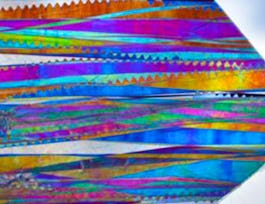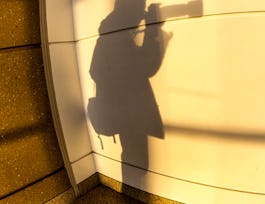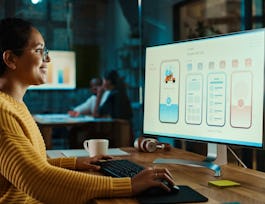Light is one of our most valuable resources on this earth. It makes the world visible to us, is the major driver of the 24-hr sleep-wake cycle to which not only humans, but virtually all life on earth (fauna and flora) submits. In fact, there would be no life on earth without light. It is therefore hard to overestimate the impact light has on humans, biologically, psychologically, socially. And yet, we hardly ever think or speak about light.



Lightcap 4: Light in indoor contexts Effects & implications

Instructor: Yvonne de Kort
Sponsored by Syrian Youth Assembly
Details to know

Add to your LinkedIn profile
7 assignments
September 2024
See how employees at top companies are mastering in-demand skills


Earn a career certificate
Add this credential to your LinkedIn profile, resume, or CV
Share it on social media and in your performance review

There are 9 modules in this course
Welcome to LIGHTCAP 4 “Light in indoor contexts”. This course explores the principles of lighting and its effects on humans in various indoor settings. It introduces elements of light and light sources, light distribution indoors, lighting standards, measurements and, simulations as an important design tool for optimizing indoor lighting. The basis of this course is mostly in building physics, lighting design and architecture.
What's included
2 videos4 readings
In this first lecture, Steffen introduces the course, revolving around the question why it is important to consider light in the design and evaluation of indoor environments. The lecture starts with an overview of the relevant human physiology (the eye, photoreceptors, the visual system, and the non-visual system), and effects of light on psychology, physiology, and behaviour (visual comfort, circadian rhythms, sleep regulation, alertness etc.). This is followed up by examples of how this applies to real world scenarios (shift work, Jetlag, office work etc.), laying the basis for the subsequent lectures in the course. At the end of the lecture the student should understand why it is important to consider light in indoor contexts and how this applies to the rest of the course.
What's included
6 videos1 assignment
In this lecture, Myrta explains the fundamentals of daylighting and electric lighting design. With the completion of this lecture the student should understand different light sources and their properties as well as conceptual strategies for integrative daylighting and electric lighting design. The lecture will start by describing the different components of daylight (direct sunlight, diffuse skylight and reflected light). The student will learn how to do climate and site analysis and understand the effect of orientation. Different side-lighting and top-lighting strategies will be described using reference pictures. The students will also learn about the properties of different electric light sources, luminaires, and lighting control systems. The lecture will be completed with an exercise where the student will need to produce ideas of applying daylighting and electric lighting in a case study
What's included
5 videos1 assignment
In this lecture, Megan will discuss how architectural characteristics and lighting design play a role in various lighting conditions and how this affects both the horizontal and vertical plane. We touch on topics of visual comfort and glare, differences between horizontal and vertical measurements, positive and negative aspects of each, and particularly discuss the various daylighting metrics that have been used for daylighting design in architecture (of course horizontal).
What's included
11 videos1 assignment
In lecture 4, Niko takes the person perspective and asks “what makes for a good lighting here?”. It is followed by a brief explanation of the fish-eye picture and why it is used to illustrate (and analyse) ”personal” lighting in the field of view. Next, there are sub-sections on the elements of luminous environment and general design issues: glare and contrast ratios, expected luminance values, issue of the glare of the screens, good colour rendering for specific activities, orientation towards daylight and importance of access to the view when deciding on workspace layout, behaviour of materials with light, CCT and its mixing in the FoV, shading devices and orientation of the workspace (NWSE) and importance of user control override. Finally, at the end there is a “good design” checklist summarizing the 5 points to consider.
What's included
4 videos1 assignment
In this lecture, Megan takes a building users’ perspective and introduces the concept of a user light profile that accumulates over a day and over a longer duration of time through space and time. Through simulation and video, the students learn about the concept of considering how users interact with a space throughout a day and tie back to the concept of spatial light exposure as a means of light accumulation. A second factor of behaviour includes a user’s influence on a given space that interrupts certain light exposures – e.g. in response to glare experiences or thermal discomfort, a common reason why people would often pull blinds - and the effects this has on light exposure levels both horizontally and vertically (i.e., spatial light distribution).
What's included
5 videos1 assignment
In this lecture, Niko explains how standards form a base to ensure functional lighting and provide a good starting reference for the designer of space. The lecture then suggests a good practice to work beyond the standards to provide for other – for example atmospheric, or aesthetical - qualities, especially as standards are also constantly revised to fit the changing times and activities. This is followed by a section explaining how beside lighting levels defined in photopic illuminances and uniformities, lighting for the NIF effects is also getting slowly pushed into the guidelines / standards domain with ongoing research publications. The lecture is then summarized with examples of lighting standards and certificates and its application, also explaining the difference between standard being a regulation, or a guideline in some cases.
What's included
4 videos1 assignment
This lecture is an introduction to lighting simulation as a method to test lighting design concepts by Myrta. This is a tutorial-based lecture that aims to teach how to quantify the effect of a lighting design. It is assumed that the student does not have prior experience with simulation tools. The students will work on creating a simple simulation model using ClimateStudio (probably). A 3D model will be provided to simplify the process. The students will select location, orientation, material properties, sky conditions, luminaire type and placement and they will calculate different grid- and view-based light metrics. At the end of the lecture, the students will be referred to more advanced lighting simulation tools for further learning.
What's included
7 videos1 reading
To close this course, Steffen explains the measurement of static and personal light exposure in real world settings. The lecture starts with a brief introduction to light metrology, covering metrological quantities (radiance, irradiance, luminance, illuminance etc.) and their physical foundation. It is followed up by an overview of different types of light measurement devices (spectrometers, photometers, luminance meters and cameras) and their various applications. Next, procedures for static light measurements in indoor light settings are described (horizontal vs. vertical, grid arrangement, fov etc.) and followed by important considerations. Then the process of Dosimetry is described, covering methodological considerations regarding measurement (device selection, calibration, measurement setup) and data analysis (processing, quantification). Finally, the lecture is concluded with a discussion of the relevance, applications and use cases of light measurements, and a case study is given in which students will be asked to describe and discuss the procedure to evaluate the efficacy of a given lighting intervention.
What's included
6 videos1 assignment
Instructor

Offered by
Why people choose Coursera for their career




Recommended if you're interested in Health

Rice University

Michigan State University

National Taiwan University

Open new doors with Coursera Plus
Unlimited access to 10,000+ world-class courses, hands-on projects, and job-ready certificate programs - all included in your subscription
Advance your career with an online degree
Earn a degree from world-class universities - 100% online
Join over 3,400 global companies that choose Coursera for Business
Upskill your employees to excel in the digital economy



